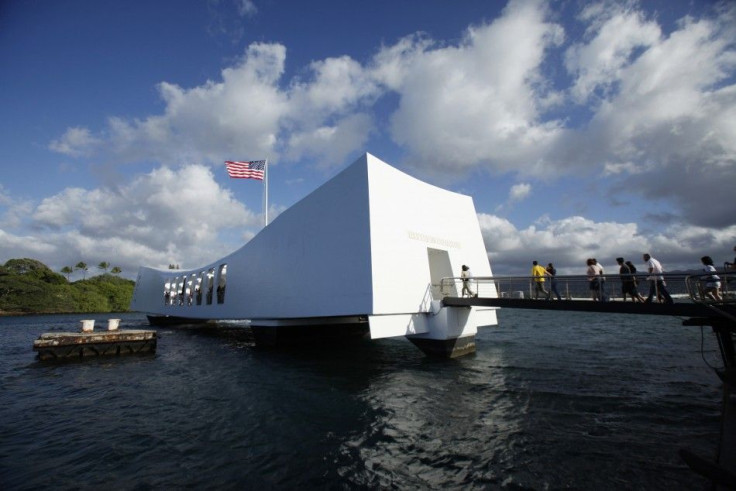Pearl Harbor: Hallowed Ground or Tourist Attraction?
OPINION

December 7 marks the 70th anniversary of the attack on Pearl Harbor on the island of O’ahu, Hawaii, and the United States’ fateful entry into the Second World War.
Most of us probably came to know of the event from a grade school history lesson, and perhaps remember it in passing each year as the date approaches. On Wednesday, just as they have for decades, local dignitaries and a dwindling number of survivors with their families will congregate at the site to pay tribute to those lost. Speeches will be made asking us to “Remember Pearl Harbor” (as the wartime song goes), leis will be dropped at the famous USS Arizona Memorial and at the wreckage of other battleships, and tributes will be paid. But for the rest of us ordinary Americans who were not there on that day that lives in infamy should ask ourselves, how do we remember Pearl Harbor?
Those who have lived in Hawaii for a number of years, as I have, would agree that Pearl Harbor is probably a little closer to our hearts than most who visit the site from the Mainland and abroad. We have been there on many a school fieldtrip, and can tell of how we are obliged to shuttle our visiting family and friends to the site so they can check Pearl Harbor of the list off places to see. We remember the difficult parking, the long lines, the gift shop, and the hot sun. In my many visits to Pearl Harbor, I have left asking myself if I truly paid my respects to those who died, or if I was merely a visitor to a 'theme park'?
Pearl Harbor is indeed an attraction; in recent years it has averaged more than 4,000 visitors daily, according to the National Park Service. Although tickets to the USS Arizona are free, and the other sites are operated non-profit, there seems to be an air of commerciality surrounding the whole place. This is perhaps inevitable when tour bus after tour bus descend upon the visitor center, when hoards of people pile out with cameras at the ready, and when it is so widely and successfully advertised.
We may not like it, but Pearl Harbor will always continue to attract a staggering crowd. This being true, a visitor to Pearl Harbor must take it on himself to see past everything that distracts from the monument’s true sanctity and value to our national memory.
In this light, Pearl Harbor is a monument to many things. It is the final resting place of the many souls who died on the USS Arizona, USS Oklahoma, and the USS Utah. It warns us against arrogance, and reminds us that the United States is not invincible. Even the great numbers of Japanese tourists who visit the site demonstrate the healing power of time, and how two bitter enemies can become great friends.
Finally, it shows the immense human cost of war. Is Pearl Harbor hallowed ground or is it a tourist attraction? It is both, and this is probably natural given the significant role it has played in world history. We have taken a lot from Pearl Harbor; all it asks in return is to be remembered.
© Copyright IBTimes 2024. All rights reserved.











